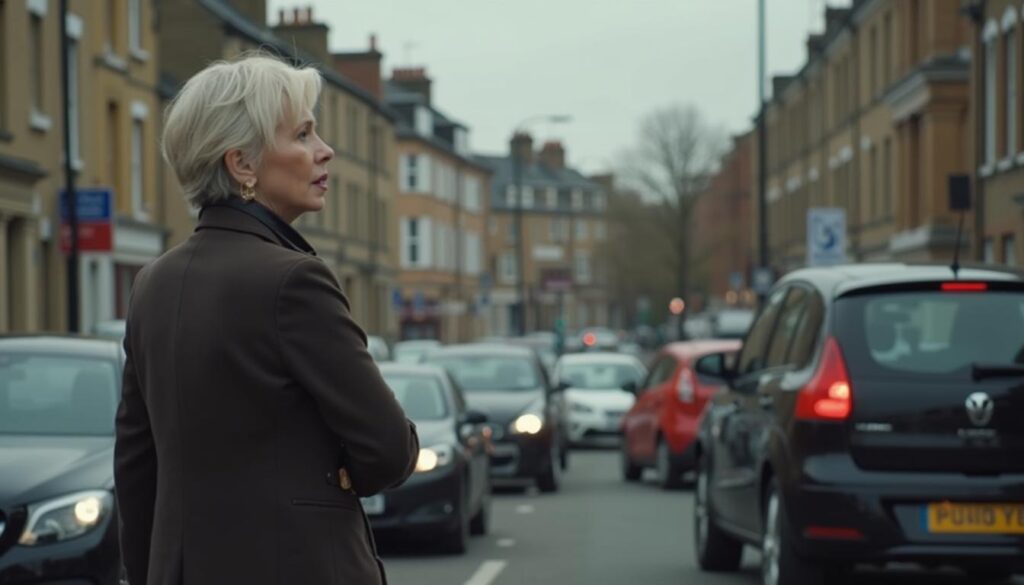Essex has emerged as one of England’s most dynamic cultural destinations, where ancient Roman heritage meets contemporary artistic innovation. With over 40 museums, galleries, and heritage sites dotted across the county, alongside a flourishing network of community-led initiatives, Essex is redefining what it means to be a modern cultural hub whilst honouring its extraordinary past.

A Museum for Every Story
Colchester Castle: Britain’s First City Speaks
Standing proudly as Europe’s largest Norman keep, Colchester Castle Museum has recently been recognised in Tripadvisor’s Travellers’ Choice Awards for 2025, ranking in the top 10% of attractions worldwide. Built upon the foundations of the Roman Temple of Claudius, this architectural marvel houses archaeological collections of international significance spanning 2,500 years of history.
The museum has undergone significant enhancements, transforming the visitor experience with cutting-edge interactive displays. Families can now build Norman archways, steer virtual Roman chariots around Colchester’s recently uncovered Roman Circus, or fire a replica ballista at projected targets on the castle’s ancient walls. The castle’s collection includes the renowned Colchester Gladiator Vase and the spectacular Fenwick Hoard, a cache of Roman silver and gold jewellery that offers a tantalising glimpse into life in Roman Britain.
Guided tours remain exceptionally popular, taking visitors deep into the Roman vaults beneath the castle before ascending to the rooftop for panoramic views across Britain’s oldest recorded town. At £13.50 for adults, entry also grants access to themed exhibitions throughout the year. Currently running through February 2026, the “Mythical Creatures” exhibition invites families on an enchanting story quest featuring dragons, unicorns, griffins, and mermaids brought to life through curious objects and interactive storytelling.
The Museum of Chelmsford and the Great Baddow Hoard
The Museum of Chelmsford has secured one of Britain’s most significant archaeological discoveries in recent memory. In May 2025, the museum acquired the Great Baddow Hoard—933 Iron Age gold coins dating from 60-20 BC—thanks to a £250,000 grant from The National Lottery Heritage Fund. This represents the largest recorded hoard of Iron Age gold coins ever found in Britain.
The hoard’s significance extends far beyond its impressive size and golden lustre. Most coins were struck in the Catuvellauni region, yet they were discovered in traditional Trinovantian territory, providing the first concrete archaeological evidence of tribal conflict and movement during Julius Caesar’s invasions. Roman sources had long documented upheaval during Caesar’s second invasion of Britain in 54 BC, but until now, physical proof remained elusive.
Claire Willetts, Curatorial and Exhibition Officer at the Museum of Chelmsford, explains the find’s importance: the coins may have been intended as tribute payments to Caesar himself. The hoard will debut in a dedicated exhibition in summer 2026 before joining the museum’s permanent collection in spring 2027. Meanwhile, the museum continues engaging visitors with its journey through Chelmsford’s history, from Ice Age mammoths to Grayson Perry’s contemporary artworks, all for just £4 per adult whilst children enter free.
Saffron Walden Museum: A Victorian Gem
Saffron Walden Museum represents one of England’s oldest purpose-built museums, having opened in 1835. This charming institution punches well above its weight, housing an extraordinary collection that includes Egyptian mummies, Ice Age fossils, and a remarkable natural history collection featuring local wildlife specimens.

Recent exhibitions have embraced both tradition and innovation. The museum’s astronomy exhibition has proven particularly popular with families, whilst the “POOCH” exhibition running from October 2025 through April 2026 celebrates humanity’s relationship with dogs through history. The museum’s approach to engagement extends beyond its walls, with events like “Murder at the Museum” transforming the Victorian building into an immersive crime-solving experience.
With admission at just £1.25 and free parking available, Saffron Walden Museum remains remarkably accessible. The museum’s commitment to community engagement is evident in its regular family activities, from fossil discovery pits to Tudor dollhouse displays, ensuring that history comes alive for visitors of all ages.
Hidden Treasures Across Essex
Essex’s museum landscape extends far beyond its headline attractions. The Natural History Museum in Colchester offers families the opportunity to explore local biodiversity and climate change through engaging displays. Hollytrees Museum, set in a beautiful Georgian townhouse, reveals 300 years of family life through hands-on exhibits that contrast the experiences of rich and poor.
For aviation enthusiasts, Stow Maries Great War Aerodrome stands as the world’s most complete surviving World War I airfield, offering a poignant window into early military aviation. The Museum of Power in Langford celebrates industrial heritage with working exhibits powered by steam and combustion engines, whilst the Essex Regiment Museum chronicles the county’s military contributions from the English Civil War through to modern conflicts.
Community Initiatives: Building Cultural Bridges
The Arts and Cultural Fund: Empowering Creativity
Essex County Council’s Arts and Cultural Fund represents a significant investment in the county’s creative future. Since launching in 2022, the fund has supported 86 projects across Essex, enabling approximately 300,000 residents and visitors to engage with arts and culture. With grants ranging from £2,500 to £30,000, the fund supports both established organisations and emerging creative practitioners.
The 2025 recipients showcase the diversity of Essex’s cultural ambitions. Multi-disciplinary artist Eloise Pilbeam is creating interactive public sculptures in Harlow using reclaimed materials and traditional weaving techniques, referencing Essex’s historic connection with the textile industry. These communal spaces invite residents to pause, reflect, and engage in playful exploration within public green spaces.
The fund prioritises projects that advance equality, foster community connections, and contribute to Essex County Council’s strategic vision. Applications for the next round will reopen in autumn 2025, continuing the council’s commitment to nurturing artistic talent whilst ensuring cultural activities remain accessible to all residents.
Community Initiative Fund: Grassroots Transformation
Running parallel to cultural funding, the Community Initiative Fund (CIF) strengthens Essex communities through practical support. In 2025, £225,000 is available for projects ranging from sports facility upgrades to community building improvements, IT systems, and cultural events. Grants of up to £10,000 support substantial initiatives, whilst micro-grants of up to £1,000 enable smaller community groups to make meaningful improvements.
Last year, more than £200,000 was distributed through CIF, supporting projects that bring people together and create vibrant, resilient communities. The fund is administered by the Essex Association of Local Councils on behalf of Essex County Council, ensuring that resources reach communities most effectively.

National Portfolio Organisations: Essex’s Cultural Anchors
In August 2025, Essex County Council announced £330,000 in funding for several Arts Council England National Portfolio Organisations based in the county. These institutions form the backbone of Essex’s cultural ecosystem, contributing significantly to the local economy through tourism, employment, and creative industries development.
Recipients include Firstsite in Colchester, one of Britain’s most distinctive contemporary art galleries housed in a striking gold-clad building; Colchester Arts Centre, which programmes diverse performances and exhibitions; The Mercury Theatre, Essex’s flagship producing theatre; and Signals, which champions artist-led innovation. Also receiving support are Essex Cultural Diversity Project, The Paper Birds Theatre Company, and Rhiannon Faith Company—all organisations committed to making arts and culture accessible whilst pushing creative boundaries.
Councillor Mark Durham, Cabinet Member for Arts, Heritage and Culture, emphasised the importance of these organisations in ensuring “the county’s arts and culture sector goes from strength to strength.”
Essex Cultural Diversity Project: Representation Matters
Established in 2008 following research commissioned by Arts Council England and Essex County Council, the Essex Cultural Diversity Project addresses the urgent need to support diverse artists and organisations whilst tackling systemic barriers to cultural participation. As an Arts Council England National Portfolio Organisation, ECDP works strategically with creative practitioners, culture and heritage sectors, diverse communities, and the voluntary sector.
The organisation’s mission centres on building sustainable networks, enhancing skills development, and creating opportunities for diverse artists. Through arts, cultural, and heritage projects, ECDP raises awareness of race equality and cultural diversity, benefiting all communities across Essex. Their work demonstrates how cultural programming can serve as a powerful tool for social cohesion and inclusion.
Museums Essex: Supporting the Sector
Museums Essex provides vital support to museums, galleries, and heritage organisations across the county, helping them deliver cultural and learning excellence. The organisation facilitates networking, professional development, and best practice sharing amongst Essex’s diverse museum community.
Regular meetings throughout the year—including the Annual General Meeting at Essex Record Office in June 2025 and gatherings at Mersea Island Museum—create opportunities for collaboration and knowledge exchange. These gatherings have become increasingly important as museums navigate changing visitor expectations, digital engagement opportunities, and funding landscapes.
The Summer of Culture Guide: Accessibility for All
Culture Essex and Explore Essex’s Summer of Culture Guide 2025 exemplifies the county’s commitment to making arts and culture accessible to everyone. The guide showcases low-cost and free activities, exhibitions, and experiences throughout summer months, ensuring that financial constraints don’t prevent residents from engaging with their cultural heritage.
Distributed through Essex Libraries, Country Parks, and participating organisations countywide, the guide highlights everything from outdoor theatre performances to heritage open days, museum late nights to community festivals. This coordinated approach to cultural programming ensures that every corner of Essex benefits from rich cultural offerings.
Heritage Week and Community Celebration
Essex’s dedication to heritage extends to annual celebrations that bring communities together. Museums across the county participate in national initiatives like Heritage Open Days, Festival of Archaeology, and Museums at Night, opening their doors for special events that reveal behind-the-scenes collections and offer unique after-hours experiences.

These events often feature expert talks, handling sessions with museum objects, curator-led tours, and family activities that transform museums from repositories of the past into dynamic community spaces. The popularity of such programmes demonstrates the public’s appetite for meaningful engagement with local history and heritage.
Digital Innovation and Access
Essex’s cultural institutions increasingly embrace digital technology to enhance accessibility and engagement. Many museums offer online collections databases, virtual tours, and digital resources for schools and families. The Museum of Chelmsford’s development of the “Timeless Treasures Project” around the Great Baddow Hoard includes digital elements designed to engage audiences unable to visit in person.
Social media platforms have become crucial tools for cultural organisations to share stories, announce events, and build communities beyond physical walls. Live streaming of talks, virtual exhibitions, and online workshops expanded dramatically in recent years, ensuring that rural and mobility-challenged residents can participate fully in Essex’s cultural life.
Volunteering: The Lifeblood of Cultural Provision
Behind Essex’s impressive cultural offering stands an army of dedicated volunteers. From museum stewards and tour guides to event organisers and conservation helpers, volunteers contribute thousands of hours annually, making many cultural experiences possible.
Essex County Council actively promotes volunteering opportunities across the county, highlighting roles in libraries, museums, and community projects. These positions offer volunteers the chance to develop skills, build confidence, and make meaningful contributions to their communities whilst gaining insider perspectives on cultural heritage.
For many heritage organisations, particularly smaller independent museums, volunteers aren’t merely helpful—they’re essential. Their passion, local knowledge, and commitment ensure that Essex’s diverse stories continue to be told and celebrated.
Looking Forward: Essex’s Cultural Future
As Essex approaches 2026 and beyond, the county’s cultural landscape continues evolving. The forthcoming display of the Great Baddow Hoard promises to attract international attention, positioning Chelmsford as a significant centre for Iron Age research and public archaeology. New exhibition programming at Colchester Castle and other major venues ensures repeat visitors find fresh reasons to engage.
Community initiatives continue expanding, with funding opportunities encouraging grassroots creativity and heritage celebration. The ongoing work of organisations like Essex Cultural Diversity Project ensures that Essex’s cultural sector reflects and serves all communities, not just traditional audiences.

Investment in cultural infrastructure—both physical and organisational—demonstrates Essex County Council’s recognition that arts, heritage, and culture contribute substantially to residents’ quality of life, community cohesion, and the local economy. The creative sector contributes £10.6 billion to the UK economy nationally, and Essex’s cultural organisations play a vital role in this economic impact whilst delivering immeasurable social value.
Practical Information for Cultural Explorers
Most Essex museums offer excellent value, with many venues providing free entry for children and concessions for families. Annual passes at institutions like Colchester Castle Museum provide unlimited visits, making regular engagement affordable. Many venues offer accessible facilities, sensory-friendly sessions, and dementia-friendly programming, ensuring cultural experiences welcome everyone.
Public transport links throughout Essex have improved, with major museums typically located within walking distance of train stations. Dedicated museum websites provide detailed accessibility information, opening times, and advance booking options for special events.
For those planning cultural visits, combining museum trips with Essex’s outstanding parks, gardens, and coastal attractions creates memorable days out. Colchester Castle sits within Castle Park, ideal for picnics before or after museum visits. Saffron Walden Museum neighbours the famous Bridge End Gardens and historic town centre, whilst Chelmsford’s museum benefits from proximity to Hylands Park and Cathedral Quarter shops and restaurants.
Conclusion: A County Proud of Its Heritage
Essex in 2025 stands as a testament to how cultural heritage and contemporary creativity can coexist and enrich one another. From internationally significant archaeological discoveries to grassroots community initiatives, the county demonstrates that culture isn’t a luxury—it’s fundamental to thriving communities.
Whether you’re exploring Roman Britain at Colchester Castle, marvelling at Iron Age gold coins at the Museum of Chelmsford, discovering natural history treasures at Saffron Walden, or participating in community arts projects funded by Essex County Council, the county offers an embarrassment of cultural riches.
For residents and visitors alike, Essex’s museums and community initiatives provide windows into the past, mirrors reflecting contemporary society, and doors opening to creative futures. In preserving its heritage whilst embracing innovation, Essex charts a course that other counties might well follow, proving that history and progress need not be opposing forces but rather complementary elements of a rich cultural tapestry.
The next chapter of Essex’s cultural story is being written now—in museum galleries, community centres, arts venues, and public spaces across the county. It’s a story in which everyone can play a part, whether as visitor, volunteer, artist, or engaged citizen. Essex’s cultural renaissance isn’t merely happening—it’s inviting you to join in.